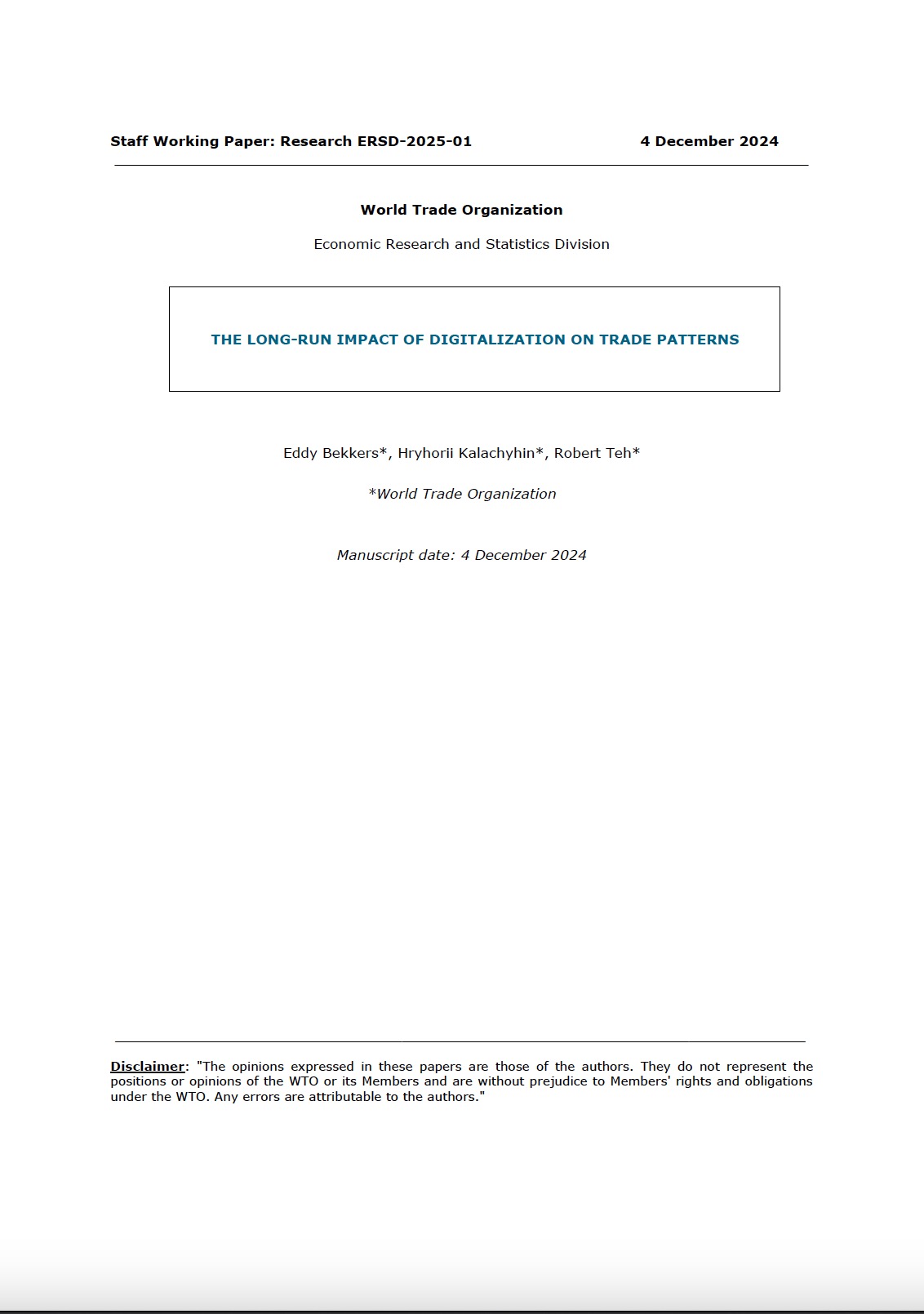世界贸易组织《数字化对贸易模式的长期影响》
发布时间:2025-04-21
浏览次数:106
作者:世界贸易组织
We employ the WTO Global Trade Model (GTM) to generate quantitative projections on the expectedlong-run impact of digitalization on global trade patterns. Five trends are modelled: (i) adoption ofarti···
We employ the WTO Global Trade Model (GTM) to generate quantitative projections on the expectedlong-run impact of digitalization on global trade patterns. Five trends are modelled: (i) adoption ofartificial intelligence which raises productivity growth;(i) digitalization reducing trade costs, (i) theshift to online sales (e-commerce), (iv) the reduced need for physical face-to-face interaction leadingto lower trade costs; and (v) changes in data policies in response to these technologies which alsoimpacts trade costs. We distinguish between a convergence scenario with larger productivity growthand trade cost reductions for low-income economies and a core scenario with uniform changes. Thesimulations generate three main sets of findings.
我们运用世界贸易组织全球贸易模型(GTM)对数字化对全球贸易格局的长期预期影响进行了定量预测。模型中涵盖了五种趋势:(一)人工智能的采用提高了生产率增长;(二)数字化降低了贸易成本;(三)向线上销售(电子商务)的转变;(四)减少面对面的实体互动需求从而降低贸易成本(五)针对这些技术的数据政策变化也会影响贸易成本。我们区分了两种情景:一种是低收入经济体生产率增长和贸易成本降低幅度更大的趋同情景,另一种是所有经济体变化幅度相同的基准情景。模拟结果产生了三组主要发现。首先,预计数字化将极大地促进全球贸易增长,并推动贸易从商品贸易向服务贸易转变,尤其是数字化可交付服务(DDS)。在数字化的推动下,2018年至 2040年期间,全球贸易年增长率将从基准情景下的 2.3%提高到 4.2%。到 2040 年,数字化将使服务贸易份额从基准情景下的27% 提升至 37.2%,而数字服务贸易在总贸易中的份额将从基准情景下的 12.4%上升至 17.4%。其次数字化能够成为包容性增长的力量,使低收入和中低收入经济体在全球贸易和收入中的份额得以提升。在趋同情景下,低收入和中低收入经济体的数字服务贸易增长预计将是最快的,其在全球贸易中的份额将从基准情景下的 8.2% 增加到 10.6%。第三,预计数字化将改变生产组织方式和显性比较优势(RCA)模式。服务贸易中进口中间品在出口中的占比将上升,而制造业则会下降。在趋同情景下,低收入经济体在数字服务贸易中的显性比较优势将扩大,不过高收入经济体在该领域的显性比较优势仍将保持强劲。
https://www.wto.org/english/res_e/reser_e/ersd202501_e.htm




















